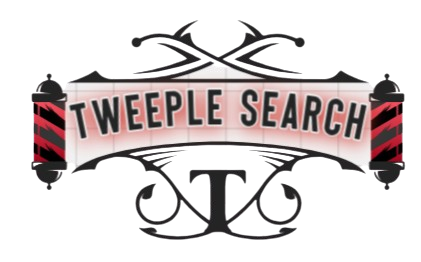Intriduction
Donkshakers are cutting‑edge bass‑enhancing devices engineered to amplify and sculpt low‑frequency sounds with precision, making them indispensable tools for modern music producers, DJs, and live sound engineers. Unlike traditional subwoofers, Donkshakers focus on targeted frequency amplification—typically between 40 Hz and 80 Hz—allowing for adjustable parameters such as resonance, decay, and impact to achieve a punchy, clear low end without overwhelming the mix. Their compact form factor and robust design mean they integrate seamlessly into both studio DAWs and live performance setups, ushering in a new era of bass innovation.
Evolution of Bass Enhancement
The quest for deeper, richer bass began long before Donkshakers emerged.
Early audio processing techniques like harmonic exciters pioneered psychoacoustic methods to enrich frequencies beyond hardware limits. Subharmonic synthesizers further expanded low‑end response by generating frequencies below the original signal, laying the groundwork for dedicated bass processors in live sound and car audio.
By the early 2000s, devices such as the AudioControl Epicenter brought sub‑bass restoration to concert venues and cinemas, using para‑bass equalization and harmonic recreation to deliver “earth‑shaking” impact without distortion. Donkshakers represent the next step, blending precise digital control with rugged portability to meet the demands of both studio and stage.
What Are Donkshakers?
Definition
A Donkshaker is a specialized bass‑enhancing device designed to target and amplify low‑frequency sounds with surgical precision, typically in the 40 Hz–80 Hz range.
Historical Context
The term borrows from car audio culture’s “donk” sub‑bass tradition, but in the music production realm it has come to signify professional tools that prioritize adjustable resonance and decay controls over brute force output.
Key Components of a Donkshaker
Frequency Amplification System
Donkshakers employ proprietary digital algorithms to boost bass waves selectively, ensuring clarity at high SPLs without muddyness.
Resonance and Decay Controls
Unlike standard bass boosters, most Donkshaker models include knobs or software parameters to dial in the resonance (emphasis on specific frequencies) and decay (how quickly the bass fades) for tailored sonic textures.
The Science Behind Donkshakers
Harmonic Resonance
By enhancing the harmonic overtones of bass frequencies, Donkshakers create the perception of deeper lows, similar to the principles used in subharmonic synthesizers.
Subharmonic Synthesis
Many Donkshakers integrate subharmonic generation to extend bass response below the original content, reinforcing notes that standard speakers struggle to reproduce.
Donkshakers vs. Other Audio Enhancers
Donkshakers vs. Subwoofers
- Precision Control: Donkshakers offer parameter adjustments for resonance and decay, whereas subwoofers simply reproduce low‑end energy across a broad range.
- Form Factor: Compact and lightweight, Donkshakers fit in racks or DJ booths, while subwoofers occupy significant floor space.
Precision Control
Adjustable EQ and harmonic restoration circuits deliver tailored bass without re‑tuning the entire PA.
Bass Output
Subwoofers excel at sheer SPL, but Donkshakers augment existing subwoofers by adding clarity and punch.
Exciters and Aural Enhancers
Exciters focus on high‑frequency enhancement to add “sparkle,” whereas Donkshakers concentrate on low‑frequency harmonics for impactful bass.
Applications in Music Production
Integration with DAWs
Producers use Donkshakers as hardware inserts or software plugins to layer bass with kick drums, ensuring the low end remains tight and defined in mixes. Popular DAWs like Ableton Live and Logic Pro support direct routing to these processors.
Live Performances and DJ Setups
DJs and live sound engineers connect Donkshakers between mixers and amplifiers to reinforce club and festival PA systems, delivering deep drops that move the crowd without sacrificing mix balance.
Choosing the Right Donkshaker
Frequency Range Considerations
Select a unit covering at least 40 Hz–80 Hz to hit the deepest bass notes common in EDM, hip‑hop, and pop.
Customization and EQ Settings
Look for models with parametric EQ, resonance, and decay controls to fine‑tune the bass character.
Parametric vs. Graphic EQ
Parametric EQ offers continuous frequency selection and bandwidth control, whereas graphic EQ presets fixed bands. Many Donkshakers combine both approaches for maximum flexibility.
Build Quality and Portability
Rugged metal chassis and rack‑mount options ensure reliability on tour, while dash‑mount remotes add convenience in mobile setups.
Market Landscape and Leading Brands
Hardware Devices
- DB Drive WDXBE6: Features 2‑channel digital bass restoration, parametric EQ, and remote control for on‑the‑fly adjustments.
- AudioControl Epicenter: Para‑Bass circuit and harmonic restoration for concert‑level impact.
Plugin Solutions
- MaxxBass: Psychoacoustic harmonics generator that simulates deeper bass on small speakers.
- Various Bass Enhancer Plugins: From free open‑source tools to premium options, plugins mimic hardware Donkshakers within DAWs.
Future Trends in Bass Enhancement
Advancements in psychoacoustic modeling and bandwidth extension technologies promise even more convincing low‑end illusions without increased power requirements. Integration with AI for adaptive bass processing may soon allow real‑time mix translation across genres and venues.
Conclusion
Donkshakers bridge the gap between brute‑force bass and precise sound design, empowering artists to craft low‑end that is both powerful and musically refined. By understanding their technology, use cases, and selection criteria, music professionals can harness the full potential of bass enhancement—whether in the studio, on stage, or behind the wheel.
ALSO READ: Brennan Mosley Obituary: A Life Marked by Tragedy
FAQs
What are Donkshakers used for?
They enhance and sculpt bass frequencies in music production, live performances, and car audio, providing deeper, cleaner low‑end without distortion.
Can Donkshakers replace subwoofers?
No; Donkshakers focus on precision bass enhancement, while subwoofers generate broad‑range low‑frequency output. They work best together.
How do Donkshakers improve live performances?
By reinforcing bass drops with controlled resonance and decay, they maintain mix clarity and audience impact in club and festival environments.
Are Donkshakers suitable for home studios?
Yes; their compact size and adjustable parameters make them ideal for home producers seeking pro‑level bass without large subwoofer setups.
Where can I buy Donkshakers?
They’re available from pro audio retailers (online and brick‑and‑mortar) and speciality music gear shops; models vary from entry‑level to high‑end.






